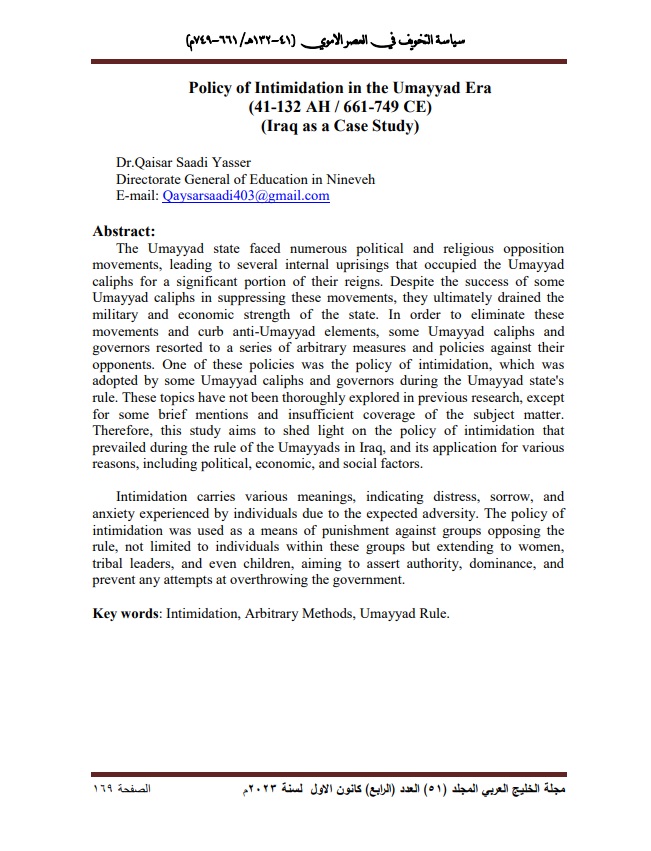Policy of Intimidation in the Umayyad Era (41-132 AH / 661-749 CE) (Iraq as a Case Study)
Keywords:
Intimidation, Arbitrary Methods, Umayyad RuleAbstract
The Umayyad state faced numerous political and religious opposition movements, leading to several internal uprisings that occupied the Umayyad caliphs for a significant portion of their reigns. Despite the success of some Umayyad caliphs in suppressing these movements, they ultimately drained the military and economic strength of the state. In order to eliminate these movements and curb anti-Umayyad elements, some Umayyad caliphs and governors resorted to a series of arbitrary measures and policies against their opponents. One of these policies was the policy of intimidation, which was adopted by some Umayyad caliphs and governors during the Umayyad state's rule. These topics have not been thoroughly explored in previous research, except for some brief mentions and insufficient coverage of the subject matter. Therefore, this study aims to shed light on the policy of intimidation that prevailed during the rule of the Umayyads in Iraq, and its application for various reasons, including political, economic, and social factors.
Intimidation carries various meanings, indicating distress, sorrow, and anxiety experienced by individuals due to the expected adversity. The policy of intimidation was used as a means of punishment against groups opposing the rule, not limited to individuals within these groups but extending to women, tribal leaders, and even children, aiming to assert authority, dominance, and prevent any attempts at overthrowing the government.




